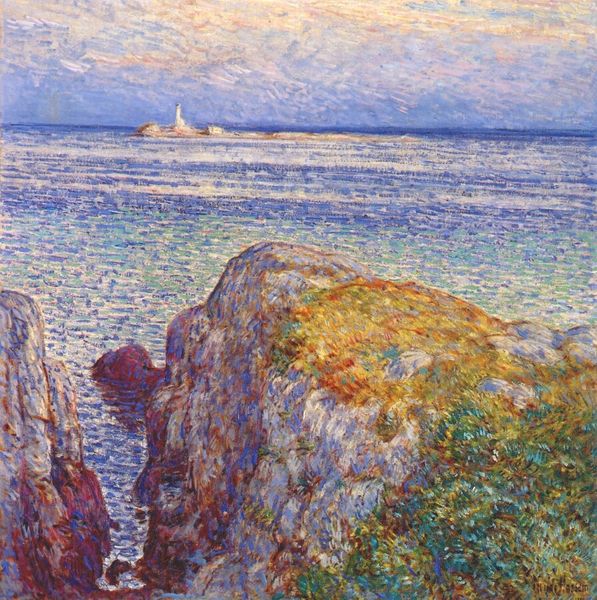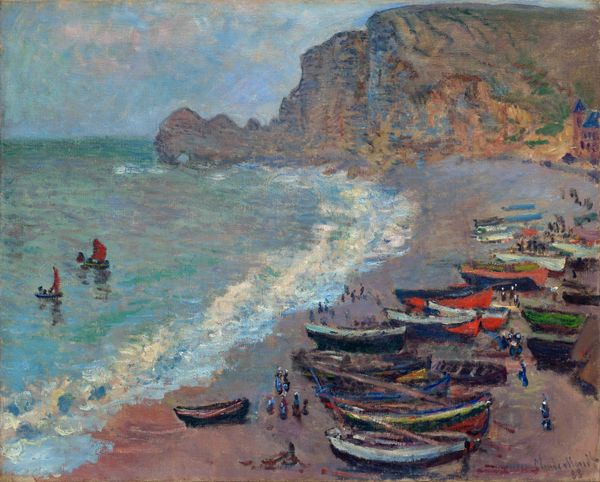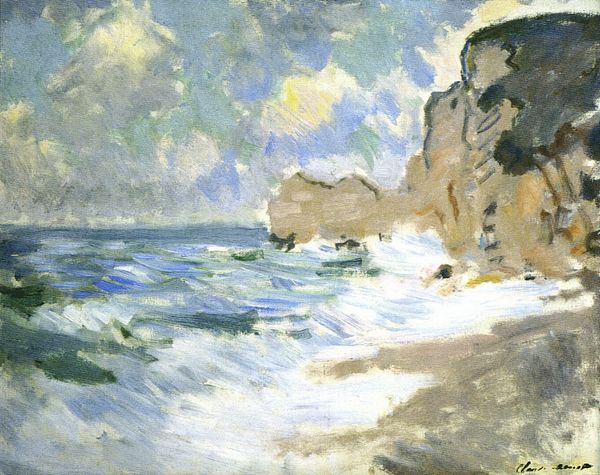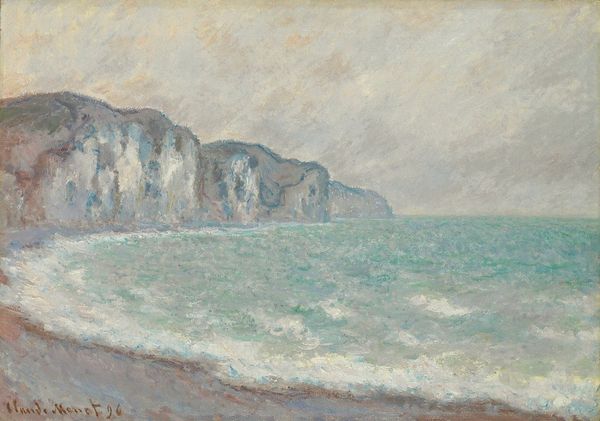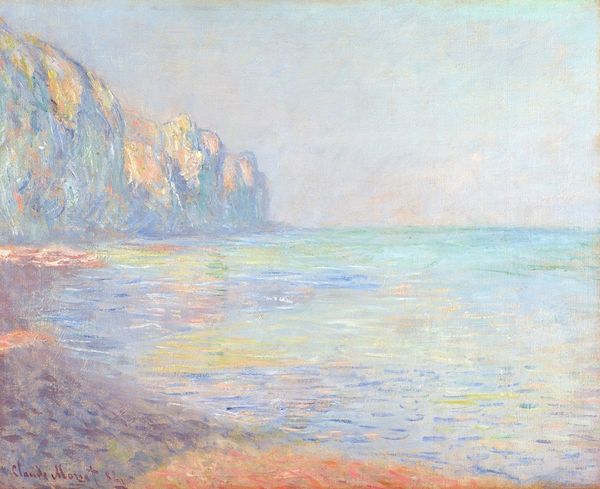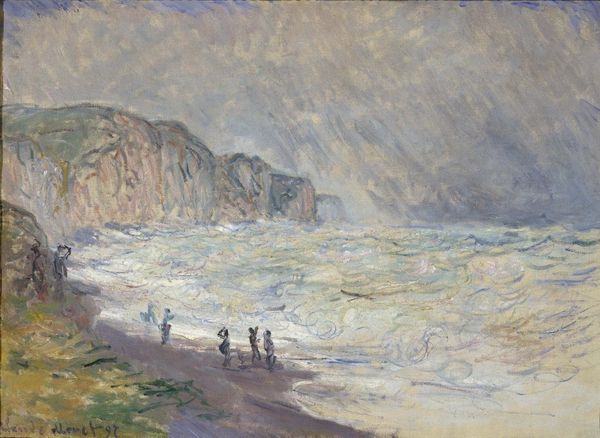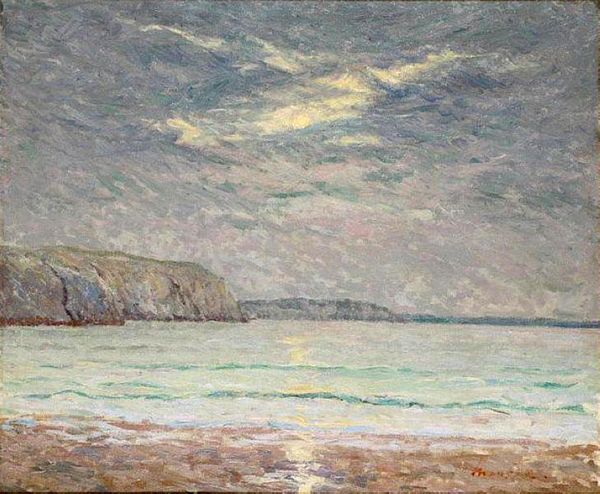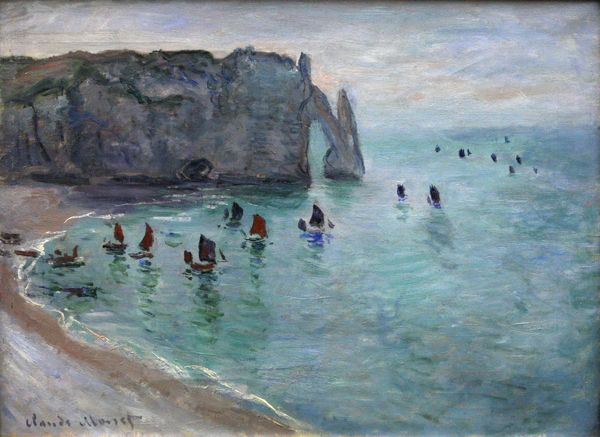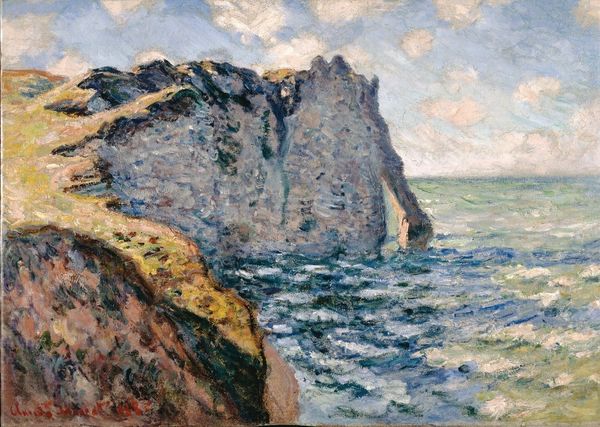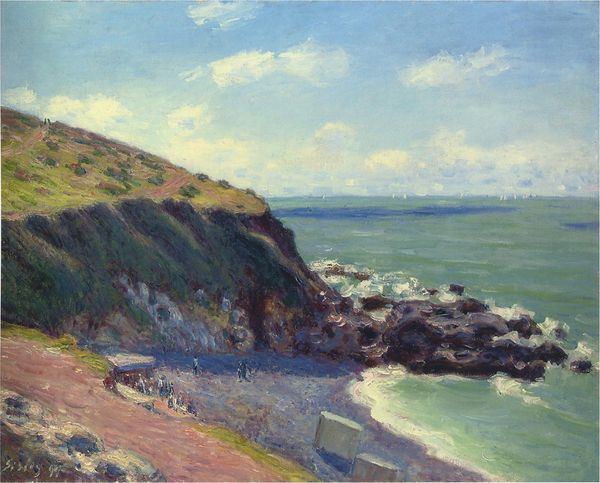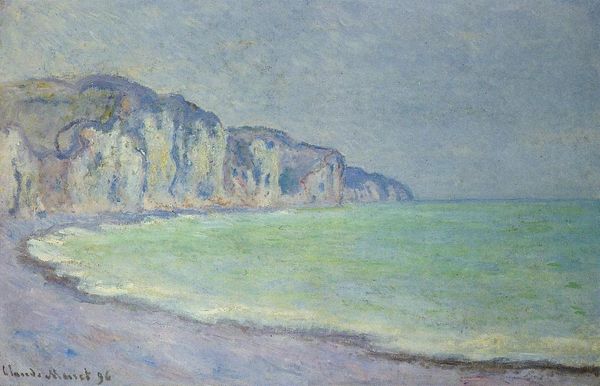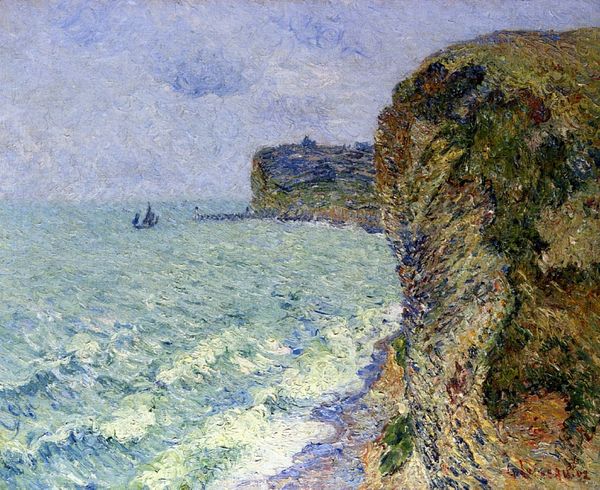
plein-air, oil-paint, impasto
#
impressionism
#
plein-air
#
oil-paint
#
landscape
#
impressionist landscape
#
oil painting
#
impasto
#
seascape
#
post-impressionism
Copyright: Public Domain: Artvee
Editor: We are looking at Claude Monet's "Étretat, The Beach and the Falaise d’Amont", painted in 1885 with oil. I'm struck by the textures – you can almost feel the rough cliff face and the gentle lapping of the waves. What formal elements stand out to you in this work? Curator: Note how Monet's brushstrokes articulate not only form, but also a semiotic play of light and shadow. The cliff is rendered through dense impasto, capturing its geological mass, while the water, articulated with flatter strokes, becomes a shimmering expanse. Do you observe how this compositional dichotomy reinforces the pictorial depth? Editor: Absolutely, the texture definitely creates depth. And the way the cliff dominates the composition gives a sense of scale. But what about the colour? Curator: Observe that the restricted palette of blues, greens, and ochres fosters pictorial coherence, unifying disparate elements through chromatic resonance. This unity facilitates our understanding of nature. Could you consider the placement of the boats and their relation to this structure? Editor: They punctuate the scene. I think the spots of red draw our eye across the whole picture. Curator: Precisely. They serve as visual signifiers, guiding our gaze, while disrupting any easy absorption into idyllic scenery. This tension between observation and structure makes the image interesting. What do you make of that? Editor: It's helpful to think about those structural elements rather than just getting lost in the beautiful scene! Curator: I concur, focusing on form unlocks a deeper understanding.
Comments
No comments
Be the first to comment and join the conversation on the ultimate creative platform.
